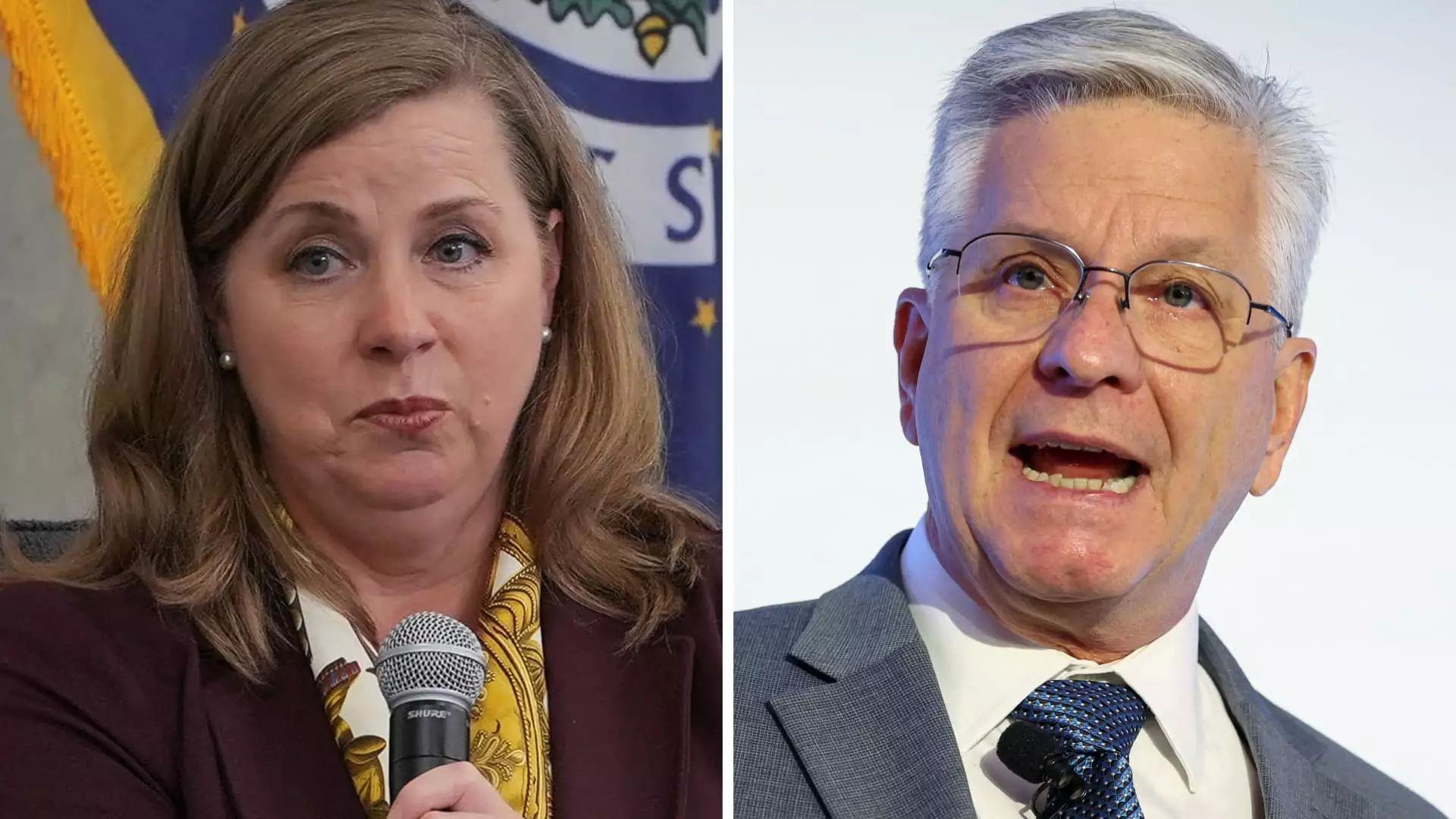Recent statements from Federal Reserve officials Christopher Waller and Michelle Bowman mark a rare divergence from the consensus. Their push for a modest rate cut — a quarter percentage point — underscores an instinct that the current wait-and-see approach is perilous. These voices are not mere dissenters; they are the voices of economic prudence challenging an overly cautious strategy that could leave the economy vulnerable. When only two governors dissent since 1993, it signals the seriousness of their warnings and suggests mainstream complacency may be out of touch with evolving economic realities.
Their argument hinges on the belief that tariffs, imposed during the previous administration, are not a lasting inflation driver. They see the impacts as temporary, yet the Federal Open Market Committee has maintained its interest rate stance since December. This prolonged pause risks allowing inflationary pressures — albeit modest now — to become embedded, especially if the labor market weakens or economic growth stalls. These dissenters advocate for a gradual easing, emphasizing that abrupt policy shifts could do more harm than good, but they also warn that inaction might lead to a delay in addressing emerging risks.
The significance is further amplified by the context: recent employment data shows sluggish growth, with only 73,000 new jobs added in July, and revisions suggesting even weaker labor market momentum. Such figures hint that the economy might be at a tipping point, yet the Fed remains on the sidelines, clinging to the belief that inflation is under control and tariffs are negligible. This disconnect between data and policy posture exposes a central flaw: a failure to recognize the nuanced signals of economic deterioration.
Policy Caution or Political Stagnation?
The Federal Reserve’s cautious stance appears to be rooted in a desire to avoid overheating the economy or fueling inflation. However, this standstill might turn out to be a form of complacency, especially when the political pressure from President Trump demands aggressive rate cuts. Trump’s public calls for reductions up to 3 percentage points reveal a partisan influence on monetary policy, which ideally should be insulated from such demands. The Fed’s decision-makers are tasked with managing economic stability independently, yet the influence of political rhetoric can distort objective decision-making.
Waller and Bowman’s call for more measured, gradual rate adjustments reflects a recognition of the complexities involved. They are wary of dramatic cuts, understanding that rapid easing might destabilize markets or create asset bubbles, but they also warn against the risks of prolonging the current hold. Their perspective emphasizes a middle ground: small, incremental reductions, carefully managed to prevent overdue inflation or a sudden downturn. If political pressures push the Fed to ignore these nuanced considerations, the risk is a destabilizing policy misstep with long-lasting consequences.
Their emphasis on tariffs’ limited inflationary impact highlights a broader disagreement about economic fundamentals. Many in the market still perceive tariffs as a significant threat, but both Waller and Bowman argue that these are transient burdens that should not justify delaying relief. This disconnect between political narrative and economic logic shows a misalignment that could undermine confidence if left unaddressed.
The Risks of Inaction and the Future Outlook
The core problem with the current approach is the potential for policy lag. The Fed’s cautious attitude risks falling behind the curve — a situation where inflation might increase unnoticed until it’s uncontrollable. The longer the committee delays targeted easing, the more difficult it becomes to rein in inflation later, especially if labor markets deteriorate more sharply than anticipated.
Meanwhile, the broader economic environment is fragile. A slowing labor market, combined with unresolved trade tensions and lingering inflation fears, creates a complex landscape. The Fed’s decision to hold interest rates steady seems increasingly based on assumptions rather than concrete evidence. If inflation persists and employment stalls, the central bank could find itself forced into emergency cuts later, exacerbating volatility and undermining credibility.
Furthermore, the debate reveals a philosophical divide: is monetary policy best used proactively, or should it wait until indicators explicitly demand action? Waller and Bowman’s stance suggests that waiting risks losing control of the economic narrative, while the majority’s cautious patience may merely delay inevitable adjustments. Their dissent is a reminder that vigilance and flexibility are essential, particularly in uncertain times.
The debate unfolding within the Federal Reserve underscores a pivotal challenge: balancing the urgency of economic stabilization against the risks of premature easing. Waller and Bowman’s dissent advocates for an active, yet cautious approach, recognizing the subtle signals of economic slowdown and limited tariff effects. Their stance is rooted in prudence, emphasizing that policy should adapt responsively rather than rigidly following a predetermined timeline. Ignoring such divergences risks not just economic discomfort but a fundamental loss of credibility at a critical juncture. The central question remains: will the Fed seize the moment to act decisively or remain paralyzed by political and institutional inertia?

